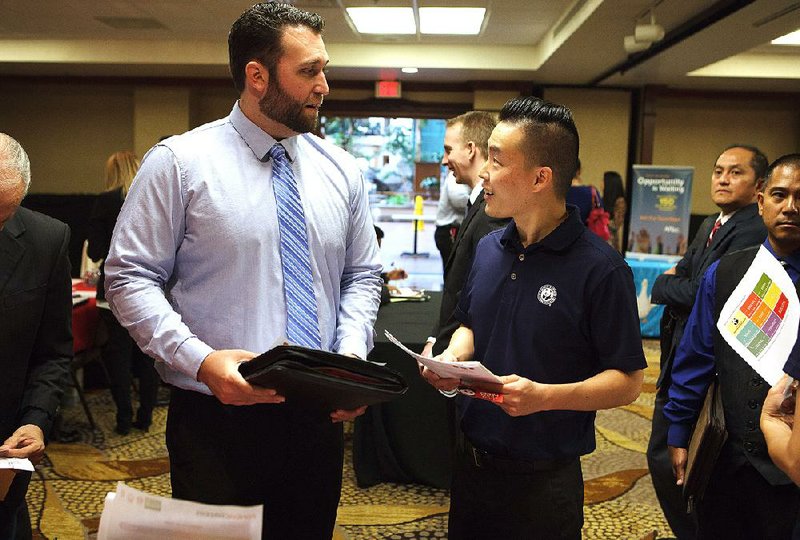WASHINGTON -- The number of Americans seeking unemployment benefits stayed at a 43-year low last week in the latest sign that layoffs are scarce.
Weekly applications for unemployment benefits were unchanged at a seasonally adjusted 246,000, the Labor Department said Thursday. The four-week average, a less volatile measure, fell 3,500 to 249,250, the lowest level since 1973.
Filings have been below 300,000 for 84 straight weeks -- a level typical for a healthy labor market.
"These numbers are really remarkable given that the labor force is obviously a lot bigger than it was in 1973," said Patrick Newport, an economist at IHS Global Insight in Lexington, Mass. "They tell us of a relatively healthy labor market."
At the same time, "even though claims are down, there's still slack in the labor market," Newport said.
The number of people receiving aid fell 16,000 to just over 2 million. That is the fewest since June 2000.
Applications are a proxy for layoffs, so the figures indicate that companies are cutting very few jobs. With the national unemployment rate down to 5 percent, from 10 percent in October 2009, some businesses say they are having trouble finding qualified workers. That suggests they are less likely to lay anyone off.
The four-decade low in unemployment claims suggests the job market remains resilient. That's a key reason the Federal Reserve is likely to raise the short-term interest rate it controls by the end of the year.
Hiring has been solid this year, even as economic growth has been slow. The economy expanded at a pace of just 1.1 percent in the first half of the year, though most economists expect it to pick up a bit.
Job gains have weakened a bit from the robust gains of the two previous years. Hiring averaged 178,000 a month in the first nine months of 2016, down from an average of 230,000 last year.
That level of hiring is enough to reduce the unemployment rate over time, economists say.
Last month the unemployment rate ticked up to 5 percent from 4.9 percent, but mostly for a good reason: More Americans came off the sidelines and looked for work, a sign they were more confident in their prospects. Not all found jobs, so the rate rose. Americans who are out of work, but aren't actively looking for employment, aren't counted as unemployed.
The number of job openings fell to the lowest level in eight months in August, the government said Wednesday, suggesting hiring could slip. Still, openings remained at a healthy level.
The number of people continuing to receive jobless benefits fell by 16,000 to 2.05 million in the week ended Oct. 1, the lowest since June 2000.
While there was nothing unusual in the data, two states -- Louisiana and Virginia -- had estimated jobless claims last week, according to the Labor Department.
States such as Florida, Georgia and the Carolinas may see a pickup in applications for benefits in coming weeks after Hurricane Matthew. Economists at Goldman Sachs Group Inc. project a 10,000 gain in the week ending Saturday as workers displaced by the storm begin to file.
Information for this article was contributed by Christopher S. Rugaber of The Associated Press and by Patricia Laya and Jordan Yadoo of Bloomberg News.
Business on 10/14/2016
